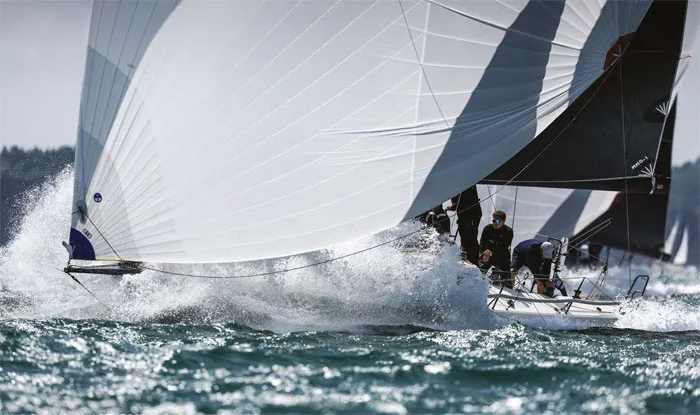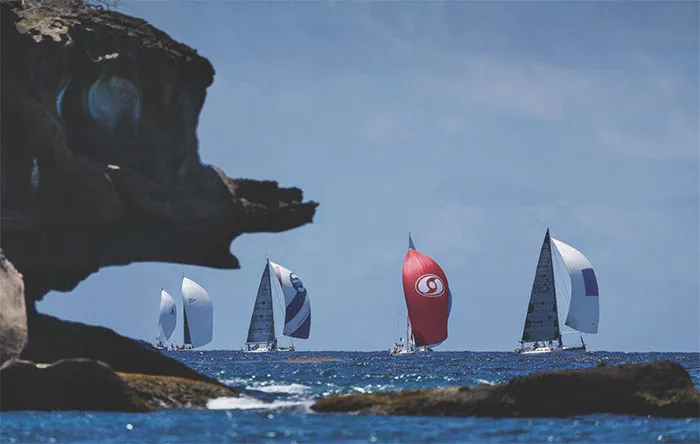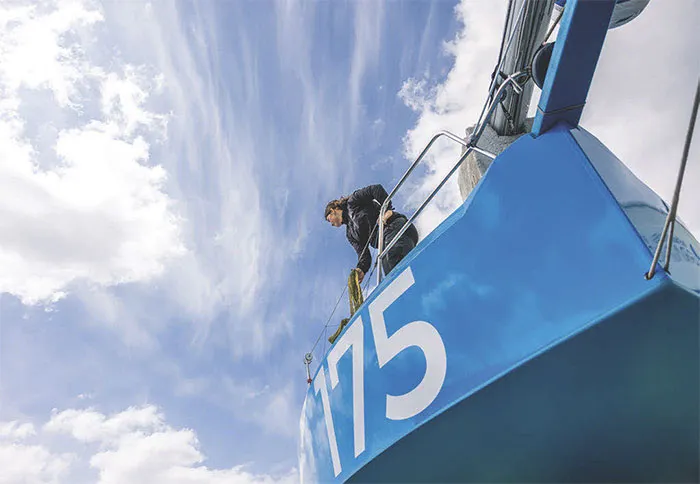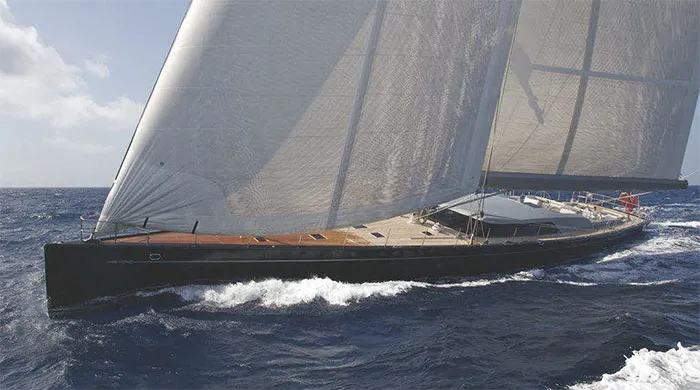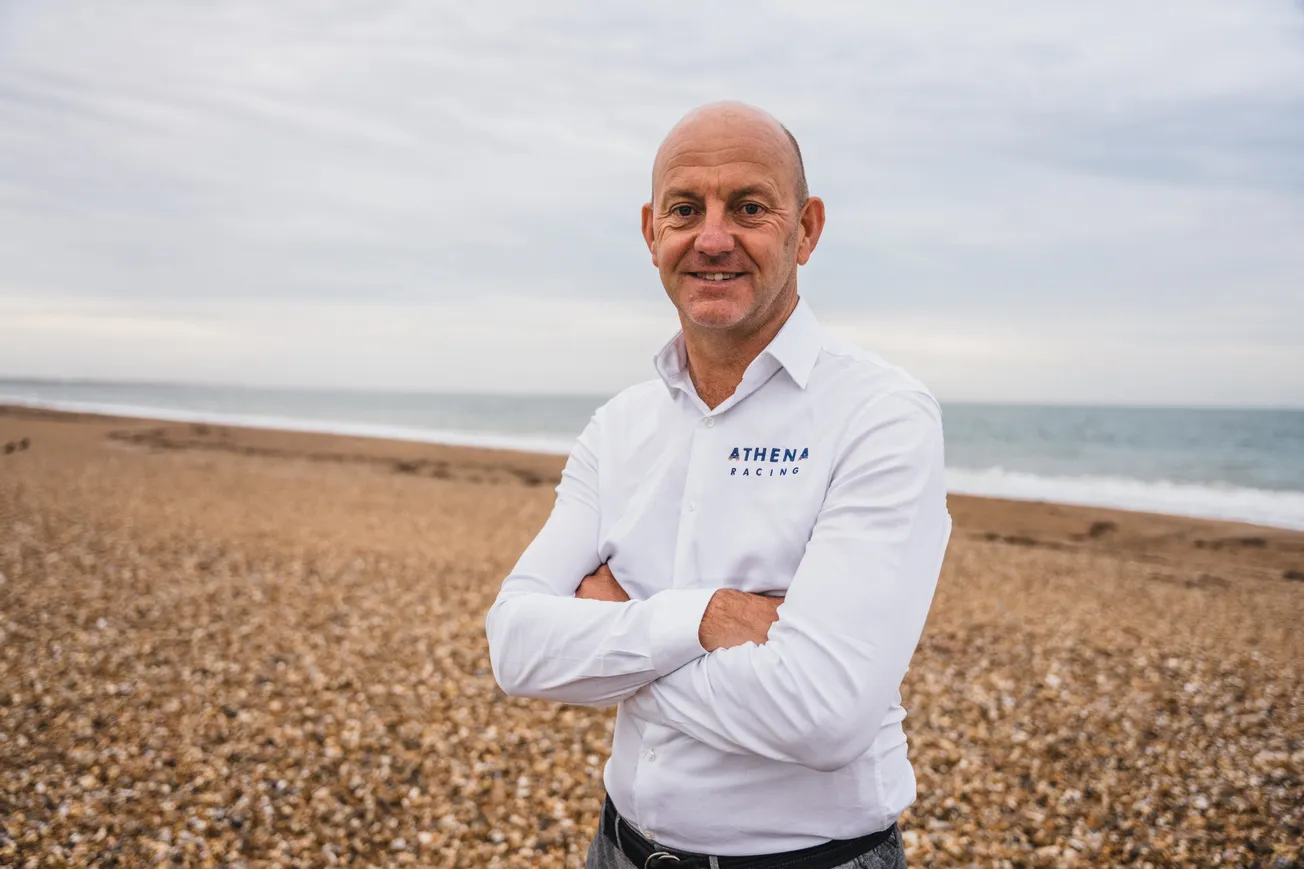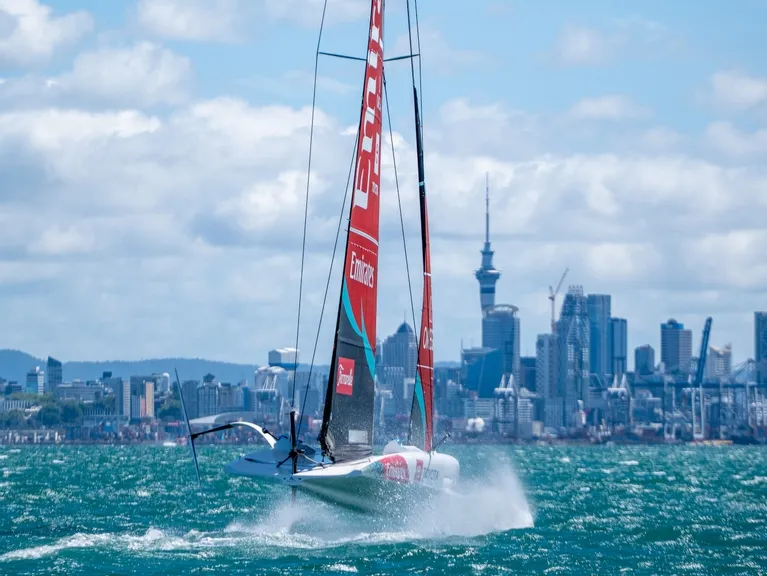
The return of the Admiral’s Cup in 2025 sent a wave of excitement through the global sailing community. Widely seen as the unofficial World Cup of offshore racing, the revival attracted elite international teams competing under IRC in a uniquely challenging format that mixed inshore intensity with offshore endurance.
At the core of several standout campaigns was Hall Spars, which is globally recognised for delivering trusted carbon spar and rig packages through close collaboration with owners, designers and naval architects. With more than four decades of expertise, Hall Spars supports a variety of projects from new builds to complex upgrades and refits.
Crucially, as part of the North Technology Group, Hall Spars’ mast designs can be fully integrated with Future Fibres composite rigging and sails from the world’s leading sailmakers, bringing spar, rig and sail development under one roof. Hall Spars specialises in building rigs for racing yachts up to 50ft LOA, an expertise that aligns closely with Admiral’s Cup Class 2, in which Hall Spars-rigged yachts dominated the fleet. Hall’s sister organisation, Southern Spars, provided bespoke high-performance rigs for much of Class 1.
A quick glance across the 2025 Admiral’s Cup fleet reveals the influence of Hall Spars’ engineering. Pierre Casiraghi’s winning Carkeek 40, Jolt 6 (YCdM), raced with a brand new Hall Spars mast and Future Fibres’ ECsix rigging. Already fitted with a Hall Spars mast, Sean Langman’s GP42 Back to Black (CYCA) added a brand new Hall Spars boom to its rig package in the lead-up to the regatta.
Other notable entries – including James Neville’s Ino Noir (Carkeek 45, RORC Red), James Murray’s Callisto (GP42, RNZYS), and Erik de Turckheim’s Teasing Machine (NMD 52, YCdF) – trusted Hall Spars and Future Fibres with rigging upgrades, ensuring their equipment was dialled in for this pinnacle event.
But presenting perhaps the most technically demanding briefs was the trio of JPK 1180s competing in AC2 - Giovanni Lombardi Stronati’s Django JPK (YCCS), Per Roman’s Garm (RORC Red), and Tom Kneen’s Sunrise (RIYC) – this being the most popular class entered in the regatta.
All three approached Hall Spars with similar requests for new mast combos that would enable them to extract every possible gain but without negatively impacting rating. Topping their objectives was reducing weight and optimising mast bend characteristics, all while maintaining a low rating. The key to this was using conventional rod rigging rather than simply switching to lighter carbon options such as Future Fibres’ ECthree.
Despite their overlapping ambitions, each team had its own specific performance targets, with each therefore requiring a bespoke solution from Hall Spars. This is where the challenge really came in.
Matt Dalziel, Hall Spars engineer manager, explains: ‘These are professional teams who come to us with a clear understanding of what they want to achieve. This is typical of many of our clients. We pride ourselves on listening first, then advising based on load data analysis, rating impact, and practical integration with the sails and other existing equipment.
‘In the Admiral’s Cup, performance in both inshore and offshore conditions was, of course, equally critical, so the design challenge became even more complex. Every detail – weight, mast bend characteristics, reliability, aesthetics and integration with sails and other existing equipment – had to be carefully balanced,’ Dalziel continues.
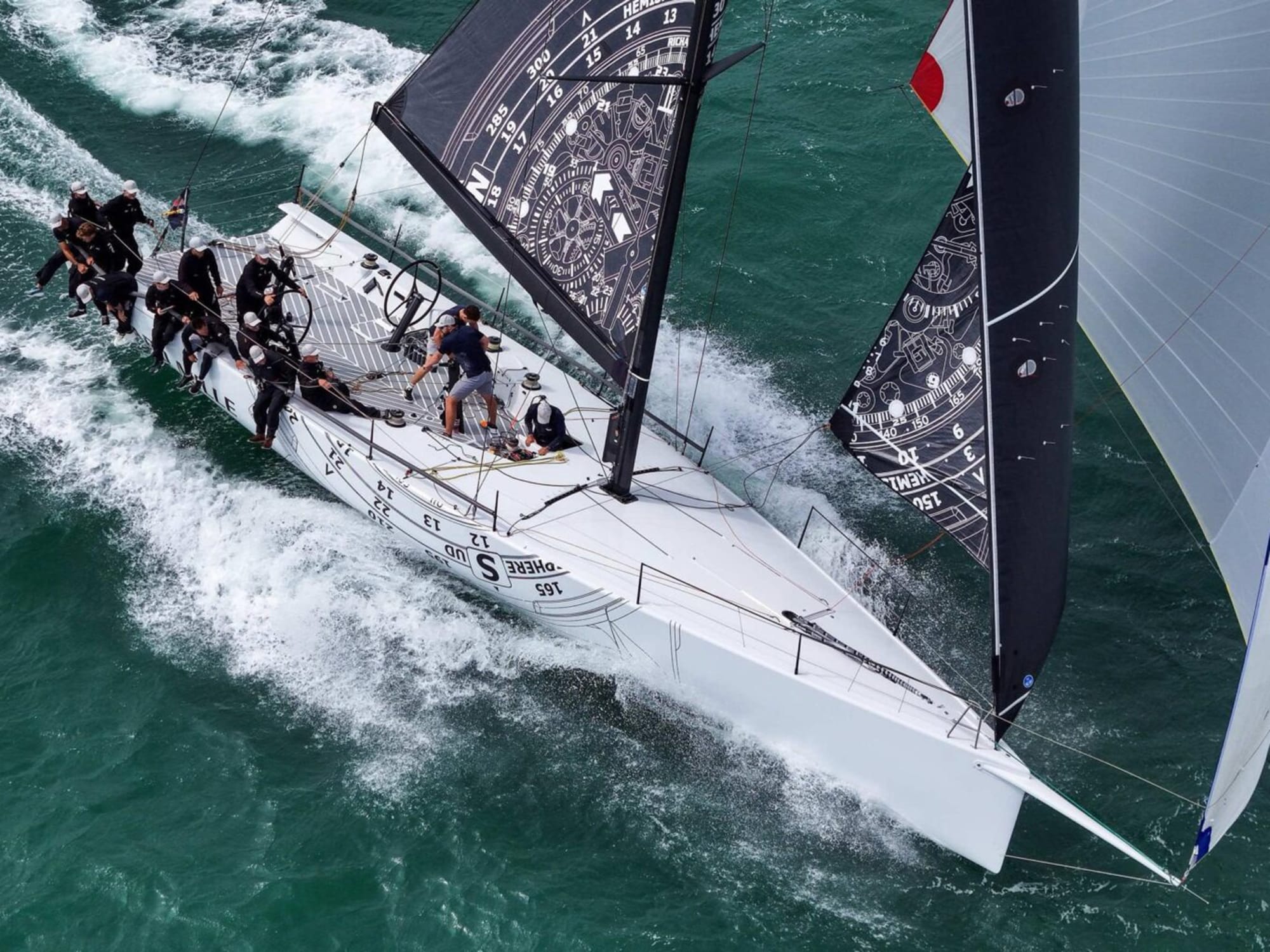
Hall Spars modelled multiple configurations customised to reflect each team’s requirements, resulting in three distinctly different rig solutions. Interestingly, although their development paths diverged in the run-up to the event, when they met on the water the three JPKs found themselves in tight competition.
In more than one of the inshore races, they crossed the finish line just moments apart; in one memorable race, they actually took all three AC2 corrected time podium spots. And 24 hours into the Fastnet Race, the three JPKs held the top three positions in AC2 under IRC – testament to the close performance of all three boats; with Hall’s involvement, the bar had definitely been raised in this class.
Ultimately, however, it was Django JPK which emerged among the three as the top Admiral’s Cup performer, finishing fourth in AC2 and so helping secure third overall in the team event alongside their YCCS teammates on Giovanni Lombardi Stronati’s new Wallyrocket, Django WR51.
Of the three, Django's rig package had involved the most significant design evolution, most notably switching from a deck-stepped to a keel-stepped mast for enhanced stiffness and added structural integrity – important for the event’s offshore elements. This also required the Hall Spars team to design a custom deck collar, which brought the added advantage of flexibility and efficiency in positioning the halyard blocks.
Driven by rating considerations, the Django team opted to eliminate the spinnaker pole and related gear. The Hall Spars design team recommended incorporating a jib halyard lock to reduce mast compression, allowing for lighter weight laminate. Other refinements included a custom wind wand bracket, lighter and more aerodynamic than the standard version – a modification later adopted by Garm as well.
With no backstay deflectors and reduced spreader sweep, Django achieved the lowest IRC rating in the fleet at 1.109, creating an ideal balance of performance versus rating that was reflected in their consistency and which particularly paid offshore. Not only did they finish third in the Fastnet finale, they also scored a solid fourth in AC2 in the opening Channel Race.
Garm’s approach was similarly performance driven and resulted in a rating of 1.117, choosing to race without backstay deflectors and with a locked headsail to reduce mast compression. They sailed without symmetrical sails, opting instead for a more streamlined set-up, drawing on advantages of reduced weight and easier handling. This proved useful in tighter situations; most notable perhaps when they scooped first in AC2 under IRC in one of the inshore races.
Sunrise, meanwhile, took a more individual approach for their rig package design, incorporating mid-mast backstay deflectors. The enhanced adjustment was seen as an advantage given that a wide range of sailing conditions was likely over such a long regatta. While this added a layer of complexity in varying the design, Hall Spars was able to model effects accurately through simulations.
Sunrise also included a spinnaker pole track to increase their options for offwind sailing, despite carrying the added weight. With the highest IRC rating of the three boats at 1.120, Sunrise ultimately took longer to find their form over the course of the event but nonetheless showed promising performance, notching up a well-earned second in one of the later inshore races – a gratifying result for Kneen and his team.
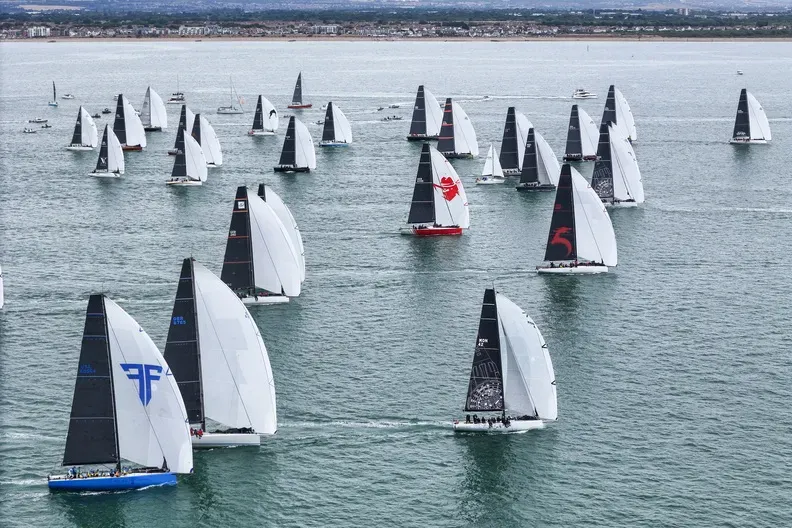
For the Hall Spars design team, the key to unlocking performance is in the detail. Much like their customers, they are passionate about doing whatever it takes. As Matt Dalziel describes: ‘Typically it’s about considering how we can make multiple incremental gains rather than any one major change; that is an intensive process, involving Hall Spars, Future Fibres and the sailmaker working together.
'That integration is really important to ensure all three elements – the rig, rigging and sails – are designed as a unified package to ensure optimum performance, as well as to maximise time and cost efficiencies in the process.’ He adds: ‘we often say that the mast and sails are the engine of the boat – and the rigging is the gearbox that enables the boat’s performance to be fine-tuned.’
That three-way synergy was perhaps best demonstrated in the Admiral’s Cup by Pierre Casiraghi’s winning Carkeek 40, Jolt 6, which raced a new mast from Hall Spars and ECsix rigging from Future Fibres, together with sails from North Sails.
This integrated package demanded a highly collaborative approach to optimise design on every level. Teams began with an in-situ visit to Jolt 6 for measurements, followed by regular consultations on progress and visits by the Jolt 6 team to Hall Spars’ production facility.
The resulting masthead rig was designed and built for minimal windage and maximum weight savings, featuring a custom wand socket, titanium end fittings and bespoke headstay fittings. Headstay loads were pushed to reduce sag, boosting sail performance while maintaining structural integrity. Halyard lock loads were carefully designed to boost sail shape efficiency while minimising weight. The team added a custom deck chock which enabled precise lateral trimming of the mast, improving control in the varying conditions expected in the Admiral’s Cup.
For the rigging, the Jolt 6 team selected ECsix, Future Fibres’ premium composite carbon option. This offers up to 75 per cent weight saving over traditional rod rigging, significantly reducing pitch. Using patented multi-strand technology, the protruded carbon rods are arranged so they flex independently to absorb impact and better resist breakage, resulting in a highly durable product, providing the peace of mind needed to push hard offshore.
‘Each individual cable is tailored with specific stiffness characteristics,’ explains Future Fibres’ head of sales, Marco Sevilla. ‘That enables us to create a unique balance of weight saving and durability. Success in the Admiral’s Cup depends on balancing those two considerations so we worked closely with the Jolt 6 team to refine that balance.’
Jolt 6’s Admiral’s Cup winning credentials stand as testament to the rig’s performance. Opening the series with an impressive second in AC2 in the Channel Race, consistent performance in the inshore series placed them third going into the Fastnet, in which they then delivered a commanding performance to win AC2 on corrected time – a phenomenal result that was key to securing the prestigious overall team victory for the Yacht Club de Monaco.
With dates now confirmed and expressions of interest open for the 2027 Admiral’s Cup, Hall Spars invites prospective teams to get in touch to discuss a race-winning rig package.


